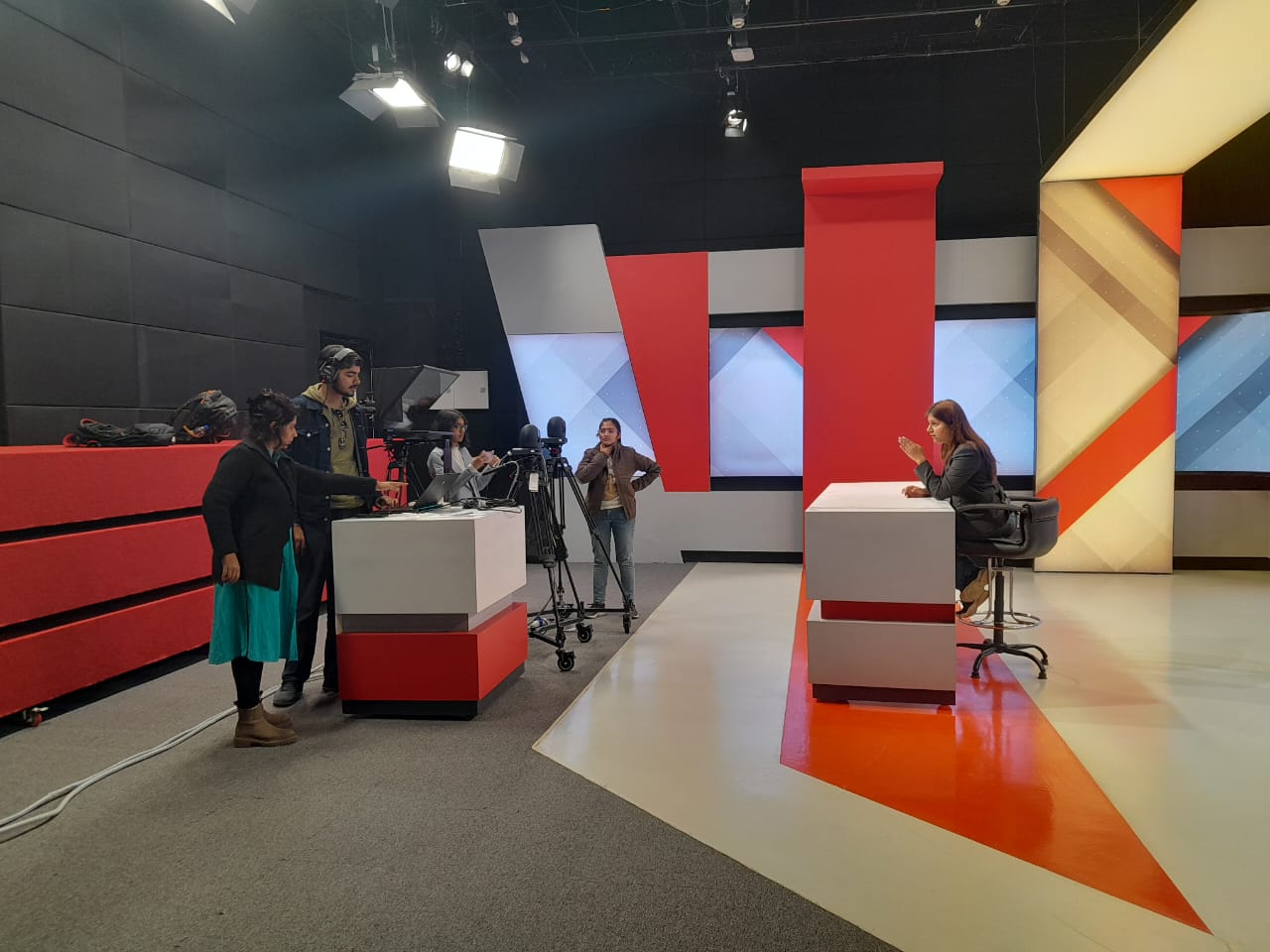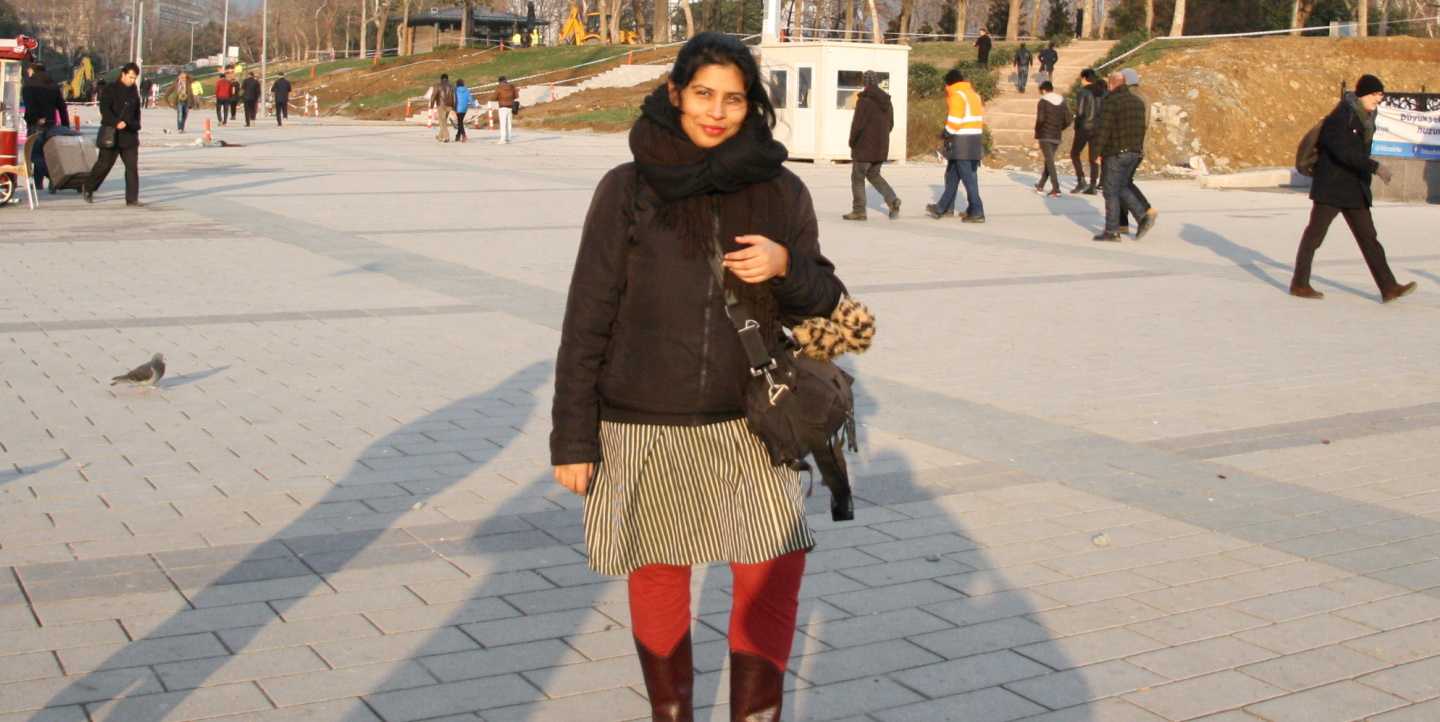Indian multimedia journalist Sudeshna Chowdhury has nearly two decades of experience, writing for a wide range of outlets on topics such as human rights, gender, and the environment. She is also a professor at UPES Dehradun. “I am invested in training the next generation of journalists in the country,” she explained.
Previously, Chowdhury lived and worked in the U.S. and she has reported internationally from countries such as Japan and Turkey. Born in the town of Digboi, she’s currently based in Dehradun, which is located in the northern Indian state of Uttarakhand.
Chowdhury spoke with IJNet about how she got her start in journalism, India’s challenging (and dangerous) media environment, and the ways in which her journalism background informs her approach to teaching.
How did you begin your career in journalism?
I started my career as a student journalist, and it was during this time that I learned the ropes of reporting while working on various city-centric stories. From doing stories on sandalwood smuggling to child runaways, the year spent reporting as a student was filled with a lot of legwork and rewarding experiences.
Post my studies, I began working as a full-time journalist gathering experience at the desk as well as in the field, engaging myself in learning various aspects of news production. This helped me gain a holistic view of how a news machinery operates.
I then amplified my experience by working in different countries where I worked with diverse sets of people and reported on significant issues. As a media educator I try to share my learning experiences with aspiring journalists and educate them about the constantly evolving mediascape of the country.

How would you describe the media environment in India?
Mukesh Chandrakar, a journalist reporting from Bastar in the state of Chhattisgarh, India was recently found dead in a place called Bijapur. An autopsy report of his body, recovered from a septic tank, revealed that he was brutally murdered. Mukesh ran his own YouTube channel. He also reported for many prestigious networks in India.
At the time of his death, he was investigating a story on corruption. Mukesh’s story is symptomatic of a bigger issue on problems faced by freelance journalists and stringers who work independently and therefore are much more vulnerable compared to mainstream journalists who work for bigger corporations.
Then there is the issue related to impunity for crimes targeting journalists. According to several media reports published in 2024, those accused in the murder of journalist and activist Gauri Lankesh were given a grand welcome by several right-wing Hindutva organizations while they were out on bail.
This presents a dismal picture and says a lot about the press freedom situation in the country. It is worth noting that India ranks 159 out of 180 countries in RSF's World Press Freedom Index.
The rise of corporate ownership and media oligarchies in India is concerning. India has also seen the rise of several organizations that are right-wing leaning. There has been a visible curb on freely reporting on issues that do not toe the line of the government. There is almost reverential treatment meted out to those in power. The current media landscape in that sense is highly polarized and divisive.
What Indian media outlets would you recommend to international observers interested in learning more about the country?
Mainstream newspapers such as The Times of India, Hindustan Times, The Hindu, and The Economic Times can serve as good sources of information. TV Channels such as NDTV and Republic Bharat are widely watched.
The Week, India Today, Outlook and Frontline are some of the best magazines in the country. Then there are many prestigious regional news organizations that focus on more city-centric stories.
Interestingly, there has been a boom of online news websites that challenge the status quo. The Wire, Newslaundry, ThePrint, IndiaSpend and Scroll are some trusted organizations that have been doing good work.
It is important to note here that Indian mainstream media have been accused of ignoring stories emerging out of rural India. Organizations such as Khabar Lahariya which serves as an independent voice on rural affairs with reportage done by women journalists, fills in this void.
Then there are YouTube channels, and several podcasts run by well-known journalists independently. These can widely reflect realities on the ground and serve as a knowledge base to learn about the current situation in the country.
How has IJNet helped your career?
IJNet has made me realize that the scope of journalism is massive. Journalists are not lone warriors, but there are members of our tribe along with several stakeholders who are doing incredible work despite intimidation and threats.
I would like to congratulate IJNet for coming up with sources and articles that inform us about the changing media scenario around the world. The article on how journalists can access high-quality satellite images of earth [published originally by GIJN] helped me understand how such images can be used as a navigational tool during the field trip.
As a freelance journalist, I have benefited a lot from webinars organized by IJNet. As a freelancer, the webinar on what editors want (beyond a good story) with IJNet contributing writer Cristiana Bedei was highly beneficial. Bedei’s quick tips on pitching stories to global editors were useful. I was glad to learn how relentless she was in making sure that her pitch reached the right editor.
As a media educator, I would like to thank IJNet for highlighting the role of student journalists and their reportage on issued related to mental health, gender, sexual harassment, etc.: Yes, student journalists are journalists.
How has your work as a journalist informed your work as an educator?
My work as a media educator is to train the next generation of journalists. I mostly teach practical courses focusing on development of skill sets that aspiring journalists need to be successful in their fields.
As a journalist with international work experience, I am keen that students learn about developments taking place in different parts of the world and acquaint themselves with work that is reputable. At the same time, I encourage students to maintain high ethical standards when they report on their subjects and to keep their guards up against mis- and disinformation.
Photos courtesy of Sudeshna Chowdhury.
This interview has been edited for clarity.


